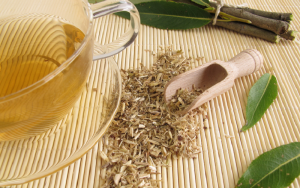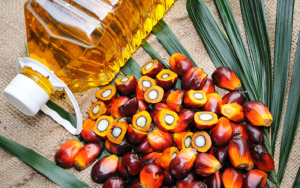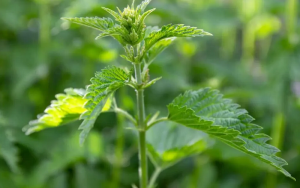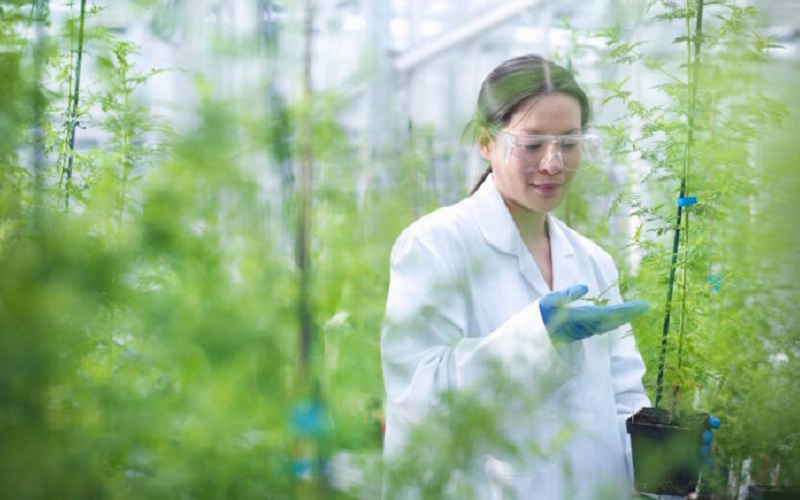
Artemisinin, a natural compound with a rich history in traditional Chinese medicine, has been making waves in the modern scientific community for its diverse health-boosting properties. Derived from the sweet wormwood plant, Artemisia annua, this unique sesquiterpene lactone has been found to exhibit potent anticancer, anti-inflammatory, and antiviral effects.
Contents
Introduction to Artemisinin
Artemisinin has deep roots in traditional Chinese medicine, and has recently been gaining attention in contemporary scientific circles due to its array of health-enhancing qualities.
Origin and Discovery
The story of artemisinin dates back to ancient China, where it was first discovered as a therapeutic agent over 2,000 years ago. The medicinal use of the sweet wormwood plant was documented in a classic Chinese medical text, “The Handbook of Prescriptions for Emergency Treatments,” written by Ge Hong in the fourth century AD. However, it wasn’t until the 1970s that modern science took notice of this powerful compound [1].
In the midst of the Vietnam War, a collaborative research project between Chinese and Vietnamese scientists led by Dr. Tu Youyou aimed to find a novel antimalarial treatment. Dr. Youyou and her team were successful in isolating artemisinin from the sweet wormwood plant, and their groundbreaking work eventually earned Dr. Youyou a Nobel Prize in Physiology or Medicine in 2015.
Traditional Uses in Chinese Medicine
In traditional Chinese medicine, the sweet wormwood plant, also known as qinghao, has been used for centuries to treat a variety of ailments. Its primary use was as a remedy for intermittent fevers, which were later identified as a symptom of malaria.
Additionally, qinghao was used to alleviate hemorrhoids, treat infections, and reduce inflammation. The ancient Chinese medical practitioners valued the plant for its ability to balance the body’s internal energies, or “qi,” and restore harmony to the patient.
Modern Recognition and Applications
Since its re-discovery in the 1970s, artemisinin has gained significant recognition for its potent antimalarial properties. The World Health Organization (WHO) recommends artemisinin-based combination therapies (ACTs) as the first-line treatment for uncomplicated Plasmodium falciparum malaria, the most deadly form of the disease.
Beyond its antimalarial effects, researchers have uncovered a host of additional therapeutic properties, including anticancer, anti-inflammatory, and antiviral activities. Today, artemisinin stands as a shining example of the potential for natural compounds to revolutionize modern medicine.
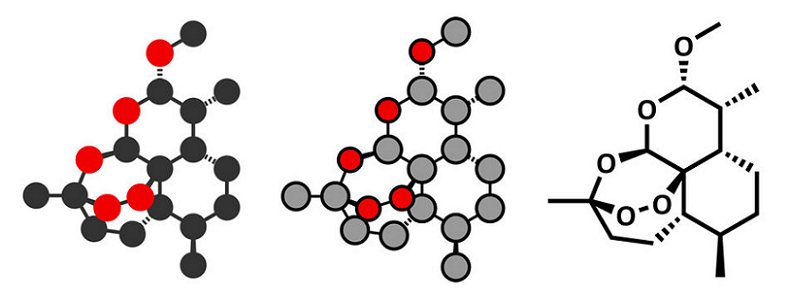
Artemisinin Chemical Structure and Properties
To better understand the diverse health-boosting properties of artemisinin, it is essential to examine its unique chemical structure and properties.
Unique Sesquiterpene Lactone Structure
Artemisinin belongs to a class of organic compounds called sesquiterpene lactones. Sesquiterpenes are characterized by a 15-carbon backbone derived from three isoprene units, while the lactone group refers to a cyclic ester formed from an alcohol and a carboxylic acid. Artemisinin’s molecular structure features a fused three-ring system, which includes a lactone ring and a unique endoperoxide bridge [2].
Endoperoxide Bridge: Key to Bioactivity
The endoperoxide bridge, which consists of an oxygen-oxygen bond within a ring, is crucial for artemisinin’s bioactivity. When the endoperoxide bridge comes into contact with iron or other transition metals, it undergoes a cleavage reaction, generating highly reactive oxygen species.
These reactive species can then interact with and damage various cellular components, such as proteins, lipids, and DNA. This property is particularly relevant in the context of artemisinin’s antimalarial and anticancer activities, as both malaria parasites and cancer cells have high iron requirements, making them susceptible to the compound’s cytotoxic effects.
Water Solubility and Bioavailability
Artemisinin exhibits low water solubility, which has implications for its bioavailability and effectiveness as a drug. The compound’s low solubility can lead to erratic absorption and suboptimal blood concentrations, posing challenges for the development of effective treatments.
To overcome these limitations, researchers have developed a range of derivatives and formulations, such as artemether, artesunate, and dihydroartemisinin, which exhibit improved solubility and pharmacokinetic properties while maintaining the core bioactivity of the parent compound. These derivatives have played a vital role in the development of artemisinin-based combination therapies (ACTs) and other novel treatment strategies.

Artemisinin Anticancer Potential
Artemisinin has garnered interest for its potential role in cancer treatment. This section will explore the preclinical studies and results that support artemisinin’s anticancer potential, its selective toxicity to cancer cells, and the underlying mechanisms of action that contribute to its antitumor effects.
Preclinical Studies and Results
Numerous preclinical studies, conducted both in vitro and in vivo, have demonstrated the anticancer potential of artemisinin and its derivatives. These studies have shown promising results across a variety of cancer types, including breast, lung, colon, prostate, and leukemia [3].
In many cases, artemisinin has been found to inhibit cancer cell growth, induce apoptosis (programmed cell death), and impede the formation of new blood vessels required for tumor growth (angiogenesis). While clinical trials are still limited, these preclinical findings provide a strong foundation for further exploration of artemisinin’s potential in cancer therapy.
Selective Toxicity to Cancer Cells
One of the most intriguing aspects of artemisinin’s anticancer activity is its selective toxicity towards cancer cells, while sparing healthy cells. This selectivity is thought to be related to the high iron content within cancer cells, which is a result of their rapid proliferation and increased metabolic demands.
As mentioned earlier, the endoperoxide bridge in artemisinin’s structure is sensitive to iron, and its cleavage generates highly reactive oxygen species that can damage cellular components. Since cancer cells have higher iron levels than healthy cells, they are more susceptible to the cytotoxic effects of artemisinin, making it a potentially attractive candidate for targeted cancer therapy [4].
Mechanisms of Action
Research into the anticancer effects of artemisinin has unveiled several mechanisms through which the compound exerts its antitumor activity. Some of the key mechanisms include the following.
Reactive Oxygen Species Generation
As previously discussed, the cleavage of the endoperoxide bridge in artemisinin generates reactive oxygen species, which can cause oxidative damage to cellular components, including DNA, proteins, and lipids. This damage can lead to cell cycle arrest, apoptosis, and ultimately, the death of cancer cells.
Cell Cycle Arrest and Apoptosis
Artemisinin and its derivatives have been shown to interfere with the cell cycle of cancer cells, causing them to become arrested at specific phases (e.g., G1, G2/M) and preventing their progression through the cycle. This disruption can trigger apoptosis, leading to the elimination of cancer cells.
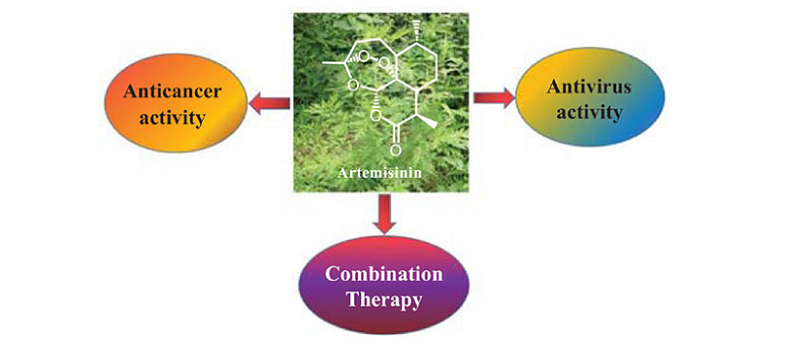
Artemisinin Anti-Inflammatory and Immunomodulatory Effects
Beyond its antimalarial and anticancer properties, artemisinin has also been found to exhibit anti-inflammatory and immunomodulatory effects.
Inhibition of Pro-Inflammatory Cytokines
Inflammation is a complex physiological response triggered by various stimuli, such as infection, injury, or chronic disease. Although it is an essential defense mechanism, excessive or prolonged inflammation can lead to tissue damage and contribute to the development of numerous diseases.
Artemisinin and its derivatives have been shown to inhibit the production of pro-inflammatory cytokines, which are small proteins that regulate immune and inflammatory responses. By suppressing the release of these cytokines, artemisinin may help to modulate inflammation and reduce its negative effects on the body [5].
Suppression of Autoimmune Disorders
Autoimmune disorders occur when the immune system mistakenly attacks the body’s own cells and tissues. This aberrant immune response can lead to chronic inflammation, tissue damage, and various clinical manifestations. Research has indicated that artemisinin and its derivatives may help suppress autoimmune disorders by reducing the production of autoantibodies and pro-inflammatory cytokines, as well as modulating the activity of immune cells such as T cells and B cells.
These immunomodulatory effects have potential applications in the treatment of autoimmune diseases like rheumatoid arthritis, systemic lupus erythematosus, and multiple sclerosis.
Protective Role in Neurodegenerative Diseases
Neurodegenerative diseases, such as Alzheimer’s and Parkinson’s, are characterized by the progressive loss of neuronal function and structure, ultimately leading to cognitive decline and motor impairment. Inflammation and oxidative stress are known to play a significant role in the pathogenesis of these disorders.
Due to its anti-inflammatory and antioxidant properties, artemisinin has been studied for its potential protective role in neurodegenerative diseases. Preclinical studies have shown that artemisinin and its derivatives can reduce neuroinflammation, promote the clearance of toxic proteins, and prevent neuronal death in various neurodegenerative disease models. These findings suggest that artemisinin could hold promise as a therapeutic agent for preventing or slowing the progression of neurodegenerative diseases.
Artemisinin’s therapeutic potential extends to its antiviral properties, which have generated considerable interest in the context of emerging viral threats and the ongoing search for new antiviral agents.
Inhibition of Virus Replication
Several in vitro studies have shown that artemisinin and its derivatives can inhibit the replication of a variety of viruses, including human immunodeficiency virus (HIV), hepatitis B virus (HBV), hepatitis C virus (HCV), and herpes simplex virus (HSV). The antiviral effects of artemisinin are thought to be mediated through multiple mechanisms, such as interference with viral entry, inhibition of viral enzymes, and modulation of host immune responses. Although the precise molecular targets and mechanisms of action may vary depending on the specific virus, these findings collectively highlight the potential of artemisinin as an antiviral agent [6].
Potential Against Emerging Viral Threats
The emergence of new viral pathogens, such as the severe acute respiratory syndrome coronavirus 2 (SARS-CoV-2), underscores the need for the development of novel antiviral therapies. Preliminary in vitro studies have indicated that artemisinin and its derivatives may have potential activity against SARS-CoV-2 and other emerging viral threats.
While these initial findings are promising, further research is required to assess the efficacy and safety of artemisinin-based treatments for emerging viral diseases in clinical settings.
One particularly interesting aspect of artemisinin’s antiviral properties is the potential for synergistic effects when combined with conventional antiviral drugs. Some studies have reported that the combination of artemisinin or its derivatives with existing antiviral agents can enhance their overall antiviral activity, potentially leading to improved treatment outcomes and reduced drug resistance. This synergistic approach may be especially relevant in the context of chronic viral infections, where long-term antiviral therapy is required, and the risk of drug resistance is high.
References
[1] Bioactive Compounds and Health Benefits of Artemisia Species
[2] Anti-inflammatory, Antioxidant and Antimicrobial Effects of Artemisinin Extracts from Artemisia annua L.
[3] Artemisia annua Purported Benefits, Side Effects & More
[4] Artemisia scoparia and Metabolic Health: Untapped Potential of an Ancient Remedy for Modern Use
[5] The most important health benefits of Artemisia
[6] Artemisia annua – an overview

